At small scales, living things seem to bend the laws of physics, which is, of course, not possible. The world of the small is often hidden from our view, but there are ways to draw out these tiny creatures. This is the world of insects and beetles.
Coleoptera is one episode in the amazing Animal World Wonders series by the incredible Professor Brian Cox on the BBC.
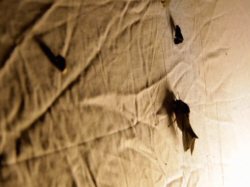
The amazing World of Beetles and other insects
This is the domain of the insects. These animals can clearly do things I can’t do and appear to have superpowers. They can walk up walls, jump many times their own height, and can lift many times their own weight. There are over 900,000 known species of insects on the planet. That’s over 75% of all animal species.
Some biologists think that there may be an order of magnitude more yet to be discovered. That would be 10 million species, and they’re very small, so you can fit a lot of them on planet Earth at any one time. In fact, it’s estimated there are over 10 billion billion individual insects alive today.
Beetle or Coleoptera
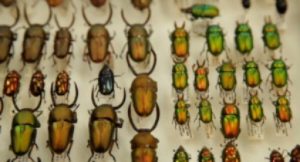
Of all the insect groups, it’s the beetles, or coleoptera, that have the greatest number of species. The biologist JBS Haldane said that if one could conclude as to the nature of the Creator from a study of creation, then it would appear that God has an inordinate fondness for stars and the beetles.
With so much variation in colour, form and function, beetles have fascinated naturalists for centuries. Each species is wonderfully adapted to their own unique niche.
This is the beginnings of biology as a science that you see here, it’s this desire to collect and classify, which then, over time, becomes the desire to explain and understand.
Rhinoceros Beetle – Xylotrupes ulysses
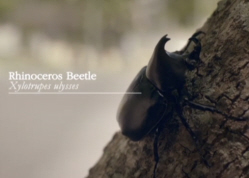
Here in the suburbs of Brisbane, every February, there is an invasion of beetles. The rules governing their lives play out very differently to ours. This is the rhinoceros beetle, Xylotrupes ulysses, named for obvious reasons.
But actually, it’s only the male Rinoceroa Beetle that have the distinctive horns on their heads. These beetles spend much of their lives underground as larvae, but then emerge en masse as adults to find a mate and breed. Much of this time, the males spend fighting over females. You also heard that hissing sound. That’s him contracting his abdomen which again is a defensive posture that he adopts to scare other males.
Gram for gram, these insects are among the strongest animals alive. I can demonstrate that. I’m just getting hold of the top of his head. It doesn’t hurt at all but watch what he is able to do. Look at that. He’s hanging on to this branch which is many times his own bodyweight. Absolutely no distress at all.
Strength of Beetles
As things get smaller, it is a rule of nature that they inevitably get stronger. The reason is quite simple. Small things have relatively large muscles compared to their tiny body mass and this makes them very powerful. The beetles also appear to have a cavalier attitude to the effects of gravity. They fight almost like sumo wrestlers, their aim is to throw each other off the branch. If they should fall… they just bounce and walk off. If I fall a similar distance relative to my size, I would break.
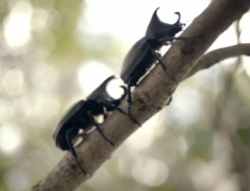
So why do size make such a difference? Time for a bit of fundamental physics. All things fall at the same rate under gravity. That’s because they’re following geodesics through curved space-time, but that’s not important. The important thing for biology is that although everything falls at the same rate, it doesn’t meet the same fate when it hits the ground.
A grape bounces. A melon… Doesn’t bounce. The reasons for that are quite complex actually. First of all, the grape has a larger surface area in relation to its volume and therefore its mass, than the melon. Although, in a vacuum, if you took away the air, they would both fall at the same rate. Actually, in reality, the grape falls slower than the melon.
Also, the melon is more massive so it as more kinetic energy when it hits the ground. Remember physics class. Kinetic energy is half MC squared, the upshot of that is that the melon has a lot more energy when it hits the ground. It has to dissipate it in some way and it dissipates it by exploding.
The relative impact of gravity
The influence of Earth’s gravity in your life becomes progressively diminished the smaller you get.
For life at the small-scale, a 2nd fundamental force of nature starts to dominate. And it’s this that explains many of those apparent superpowers.
For me, the force of gravity is a thing that defines my existence. It’s a force that I really feel the effects of. But there are other forces at work. For example if I lick my finger and wet it, I can pick up a piece of paper and can hold it up against the downward pull of gravity. That’s because the force of electromagnetism is important. In fact, it is the cohesive forces between water molecules and the molecules that make up my finger and the molecules that make up the paper, that are dominating this particular situation. That’s why this piece of paper doesn’t fall to the floor.
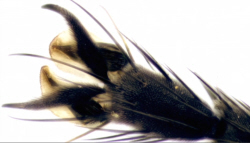
Many insects can use a similar effect. Take a common fly for example. Their feet have specially enlarged pads onto which they secrete a sticky fluid. And that allows them to adhere to rather slippery surfaces like the glass of this jam jar. It allows them to do things that for me would be absolutely impossible. It’s all down to the relative influence of the different forces of nature on the animal.
So the capacity to walk up walls and fall from a great height without breaking plus super strength, are not superpowers at all. They’re just abilities gained naturally by animals that are small and lightweight.
But this is just the beginning of my journey into the world of the small. Down at the very small scale, it becomes possible to live within the lives of other individuals, worlds within worlds. But just how small can animals get?
Further Reading and Accessories
The Book of Beetle: A Life-Size Guide to Six Hundred of Nature’s Gems (Book Of Series)
A Box of Beetle: 100 Beautiful Postcards
Australian Longhorn Beetle: (Coleoptera: Cerambycidae) Volume 2 Subfamily Cerambycinae
Alilang Antique Golden Tone Egyptian Vintage Inspired Pincher Scarab Beetle Bug Brooch Pin
Opaline Stone Beetle Spider Brooch
Buggy Car Beetle Hippie Cufflinks
Real Green Turtle Beetle Insect Specimen GLOW IN THE DARK Necklace – PENDANT SIZE 45 x 31mm YD0941
External Links
Beetles – Wikipedia Page
